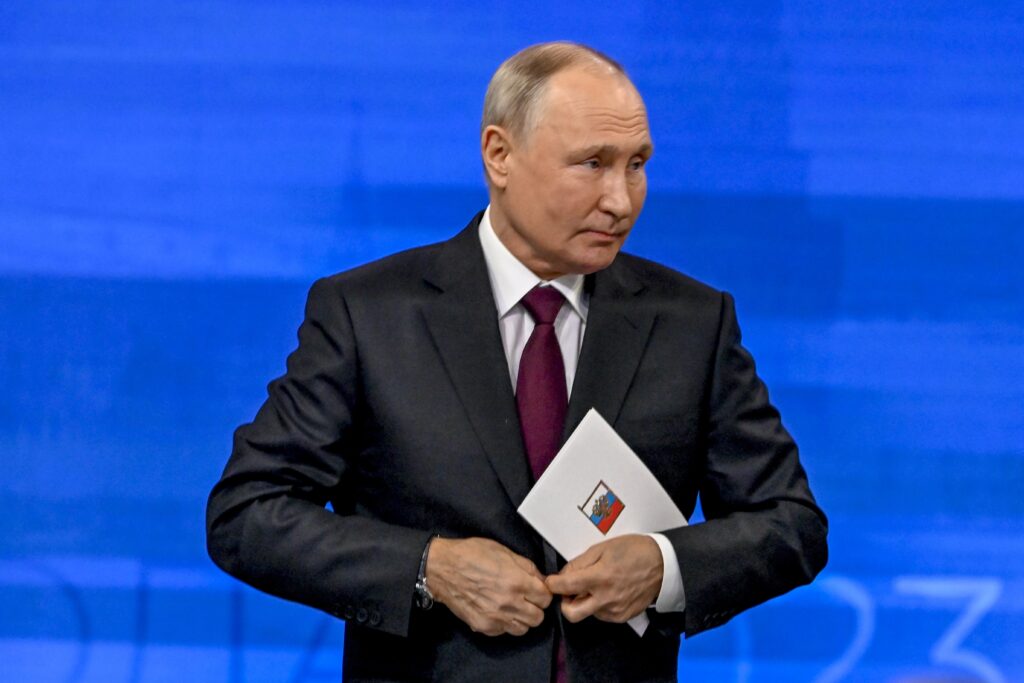Russian President Vladimir Putin has proposed direct talks with Ukraine in Istanbul on 15 May, inviting Ukraine to resume discussions without preconditions. This offer was made on Saturday night, despite Ukraine’s call for a 30-day ceasefire, which was supported by Western allies. Putin’s invitation comes after recent tensions during a temporary ceasefire for Victory Day, which saw continued fighting on multiple fronts. While Russia has expressed readiness for talks, the situation remains tense with accusations from both sides of violating the temporary truce.
Putin’s Proposal for Talks in Istanbul
On 10 May, Russian President Vladimir Putin announced plans to hold direct talks with Ukraine’s leadership in Istanbul on 15 May. Putin emphasized that Russia is ready to engage in negotiations with Kyiv “without preconditions.” This marks the latest attempt by Russia to open diplomatic channels with Ukraine amid the ongoing conflict.
Putin’s proposal came just days after Ukraine, supported by Western leaders, called for a 30-day ceasefire to facilitate peace talks. However, Putin did not address Ukraine’s request, instead repeating Moscow’s stance that military support for Ukraine from Western nations must end before any negotiations can take place.
Ukraine’s Call for Ceasefire and International Support
Ukrainian President Volodymyr Zelenskyy has pushed for an unconditional ceasefire, starting 12 May, as a critical step toward de-escalating the conflict. The call was backed by several European leaders, as well as U.S. President Donald Trump, who warned Russia of increased sanctions should it reject the proposal. Despite these appeals, Moscow has continued its military actions, ignoring Kyiv’s calls for a halt to hostilities.
To mark Victory Day, Russia declared a temporary three-day ceasefire from 8 May to 11 May. However, both Ukraine and Russia reported ongoing military engagements, with each side accusing the other of breaking the ceasefire. Ukraine’s Foreign Minister Andrii Sybiha took to social media to condemn the ceasefire as a “farce,” accusing Russia of bombing civilian areas and frontline positions under the guise of a truce.
Continued Fighting Despite Ceasefire Declaration
Though Russia declared a ceasefire for Victory Day, fighting did not cease. Ukrainian forces continued to face off against Russian troops, particularly in contested regions like the Donbas. According to Ukrainian officials, Russia’s military activities persisted despite the temporary ceasefire, leading to mounting casualties and further destruction of civilian infrastructure.
Meanwhile, Russian officials also reported violations of the ceasefire by Ukraine. Putin claimed that Ukrainian forces launched five armed incursions into Russia’s Kursk and Belgorod regions during the ceasefire period. He dismissed these incursions as having “no military significance” and labeled them as deliberate provocations aimed at escalating the conflict.
Kremlin Accuses Kyiv of Escalating Tensions
In his address to the nation, Putin blamed Ukraine for the escalations that occurred during the temporary ceasefire. He stated that Kyiv had intensified its military operations in the lead-up to Russia’s Victory Day break, with multiple incursions into Russian territory. According to the Kremlin, these actions were unprovoked and undermined efforts for peace.
Putin reaffirmed Russia’s position that it had adhered to the terms of the ceasefire, despite continued skirmishes along the frontlines. He reiterated his willingness to engage in direct talks with Ukrainian leadership but emphasized that such discussions would take place without preconditions, signaling Moscow’s unwillingness to compromise on its key demands.
The Path Forward: Will Talks Yield Results?
The recent exchange of offers and accusations between Russia and Ukraine has left the international community wondering whether direct talks will lead to a breakthrough or simply mark another chapter in the prolonged conflict. The situation remains fluid, and while Putin’s proposal for talks may signal a potential opening for diplomacy, the path to peace is fraught with challenges. As both sides continue to clash on the battlefield, the likelihood of a meaningful ceasefire or resolution remains uncertain.
